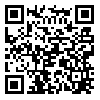BibTeX | RIS | EndNote | Medlars | ProCite | Reference Manager | RefWorks
Send citation to:
URL: http://ijhe.tums.ac.ir/article-1-58-en.html
Backgrounds and Objectives: Selection of proper coagulants for turbidity removal and determination of effective methods to reduce coagulants dose and related costs in water treatment plants is of critical importance. The present study investigates the effect of returned sludge on improving the performance of poly-aluminum chloride (PAC) in turbidity, coliform bacteria, heterotrophic bacteria removal from drinking water during rapid mixing phase.
Materials and Methods: In order to determine the optimal returned sludge volume injected during rapid mixing with PAC for turbidity, total coliform and hetrophic bacteria, experiments were conducted based on variables such as injected silt volume (from 0 - 125 ml), and varying turbidities from 58 - 112 NTU. At the end of each JAR experiments, remaining turbidity , microbial parameters of samples were measured . Coagulant efficiency in turbidity removal and microbial parameters were determined by Covariance, Duncan analyses and graphs were drawn by MS Excel . The results statistically showed significant among variables (P<0.05).
Results: The results showed that the maximum turbidity removal efficiency of 98.92 at 30 ppm was 10 ml while the maximum turbidity removal efficiency of 98.31 at 10 ppm was 4 ml. The maximum total coliform removal efficiency of 95.68 obtained for 10 ppm in 10 cc injected sludge volume.
Conclusion: This study shows that addition of returned sludge to flash mixing can reduce the turbidity of samples.
Received: 2011/04/24 | Accepted: 2011/07/24 | Published: 2013/07/9
| Rights and Permissions | |
 |
This work is licensed under a Creative Commons Attribution-NonCommercial 4.0 International License. |





